Yamaha 9.9 Outboard Runs Full Throttle: Diagnose & Fix Idle Problems
- Understanding Common Yamaha 9.9 Outboard Engine Issues
- Diagnosing Yamaha 9.9 Outboard Issues
- Repair and Maintenance Tips for Yamaha 9.9 Outboards
- Community and Expert Support Resources
- Frequently Asked Questions About Yamaha 9.9 Outboard Issues
- Preventative Maintenance for Long-Term Reliability
- Sources and Further Reading
As a boat owner with over 15 years of hands-on experience maintaining outboard engines, I've faced that frustrating moment when my Yamaha 9.9 would run beautifully at full throttle but utterly fail at idle. I remember a particular fishing trip that was nearly ruined when my outboard refused to idle at the dock—running perfectly once underway but stalling every time I tried to slow down. After years of diagnosing these quirky behaviors in my own engines and helping fellow boaters with theirs, I've learned that this common problem often traces back to a handful of key issues that are actually quite fixable.
This guide reflects not just textbook knowledge, but real-world troubleshooting from someone who's been elbow-deep in marine engines since 2008. I'll walk you through the exact steps I've successfully used to resurrect countless outboards, including four different Yamaha 9.9 models across various years.
Understanding Common Yamaha 9.9 Outboard Engine Issues
The peculiar behavior where your Yamaha 9.9 performs flawlessly at full throttle but struggles at idle is something I've encountered repeatedly. In my experience with carbureted engines like the Yamaha 9.9, this paradox stems from how differently the engine operates at various RPM ranges.
When I was first learning about outboard mechanics, an old marine technician explained it perfectly: "At high throttle, your engine's drinking from a garden hose—minor blockages won't matter much. At idle, it's sipping through a coffee straw—even a speck of dust becomes a dam." This analogy perfectly captures why a Yamaha 9.9 might run beautifully at 5000-6000 RPM but stall completely at 900 RPM.
Symptoms of Yamaha 9.9 Outboard Problems
From my own troubleshooting sessions, I've noticed these symptoms usually appear in a predictable pattern:
Engine Dies or Sputters at Idle or Low Throttle: Last summer, my friend's 2010 Yamaha 9.9 would run perfectly offshore but die immediately when approaching the dock. Upon inspection, I found the idle jet nearly completely blocked with a tiny particle of debris that looked like nothing more than a grain of salt. That minuscule speck was enough to starve the engine at idle while having zero impact at higher RPMs.
Inability to Run Without Choke: I once purchased a used Yamaha 9.9 that would only run with the choke partially engaged. After disassembling the carburetor, I discovered the idle circuit was so clogged with varnish that the choke was the only way the engine could get enough fuel. The main jet was large enough that some fuel still flowed through despite the varnish, allowing higher-RPM operation. For detailed guidance on carburetor repairs, refer to the Yamaha Outboard Carburetor Rebuild Tutorial.
RPM Drop or Stumbling at High Throttle: While working on a 2005 Yamaha 9.9, I noticed it would run smoothly at idle but stumble badly when pushed hard. Upon inspection, I found the fuel filter was partially clogged with what looked like tiny fibers from the fuel tank's deteriorating lining. The idle circuit needed so little fuel that it didn't show problems, but higher demands exposed the restriction. You can find quality Yamaha Fuel Filter replacements to avoid such issues.
Engine Overheating Warnings: During a fishing tournament in 2018, my buddy's Yamaha 9.9 started losing power at high speed without warning. When I checked, the water output stream was barely trickling. We pulled the lower unit and found the impeller had three vanes completely torn off from running through shallow, sandy water. The engine could idle fine with minimal cooling needs, but overheated under load. For impeller maintenance, see our guide on Water Pump Repair Kit vs. Impeller Only: What Does Your Outboard Need?.
Poor Throttle Response: My own 2012 Yamaha 9.9 developed a frustrating hesitation when accelerating from idle. It would momentarily bog down before catching and running properly. The culprit turned out to be a stretched accelerator pump diaphragm in the carburetor that couldn't deliver the extra fuel needed during rapid throttle opening.
Causes Behind Idle and Low Throttle Stalling
In my years working with these engines, I've found that 80% of idle problems stem from fuel delivery issues, with the carburetor being the primary suspect.
Carburetor Debris: When I rebuilt my first Yamaha 9.9 carburetor in 2009, I was amazed at how much sediment had accumulated in the float bowl. This debris eventually found its way into the idle jet, causing persistent stalling problems. I've learned to always check the float bowl first—it's like a holding area for potential trouble. For tips on carburetor parts and repair kits, visit the Yamaha Carburetor Repair Kit collection.
In 2017, I was working on a Yamaha 9.9 that had been sitting unused for two seasons. The carburetor looked relatively clean visually, but when I ran compressed air through the idle circuit, nothing came out! A tiny fragment of deteriorated fuel line had created a perfect plug. After careful cleaning with a thin copper wire and carburetor cleaner, the idle circuit flowed freely again, and the engine ran perfectly.
Fuel-Air Mixture Imbalance: I've found the factory settings for the idle mixture screw don't always work perfectly in real-world conditions. On my own Yamaha 9.9, I discovered that the service manual recommendation of 1.5 turns out from fully seated was too lean for consistent idling. After methodical testing, I found that 2.25 turns provided the perfect idle mixture for my specific engine—each one seems to have its own "sweet spot."
Sensor Malfunctions: While less common on the carbureted 9.9 models, I once troubleshot a newer Yamaha 9.9 that would run fine at speed but die at idle after warming up. The culprit wasn't fuel-related at all—it was a faulty oil pressure sensor that was incorrectly signaling the engine to shut down, but only when oil pressure dropped to normal idle levels.
Saltwater Impact on Engine Components: During my years guiding in Florida, I saw firsthand how quickly saltwater could destroy an outboard. A client brought in a Yamaha 9.9 that had been used in saltwater without proper flushing. The corrosion had partially blocked the idle passages in the carburetor while leaving the main jet relatively clear. The result was an engine that ran fine at speed but wouldn't idle without constant adjustment.
Causes Behind Wide Open Throttle Problems
When examining high-RPM issues, I focus on systems that are stressed under load:
Overheating: In 2016, I helped diagnose a Yamaha 9.9 that seemed to run fine for about 15 minutes before losing power. Using an infrared thermometer, I confirmed the powerhead was reaching concerning temperatures. The cooling system appeared to work initially but couldn't maintain proper cooling under sustained load. For in-depth details on thermostat care, see Thermostat Maintenance: Keeping Your Outboard Running Cool.
Restricted Water Flow from Saltwater Use: I once worked on a 2008 Yamaha 9.9 from a rental fleet that had spent its life in saltwater. The exhaust passages were so caked with salt crystals that cooling water couldn't properly flow through them. The engine could idle all day but would quickly overheat under load when more cooling was needed.
Degraded Cooling System Parts: Last spring, I replaced the water pump on my fishing buddy's Yamaha 9.9. The impeller looked okay at first glance, but I noticed the rubber had hardened significantly. Under the minimal demands of idle speed, it could still move enough water, but at full throttle, it couldn't keep up with cooling requirements. For help with water pump replacements, check out our Step-by-Step: Installing a Water Pump Repair Kit on a Yamaha Outboard.
Diagnosing Yamaha 9.9 Outboard Issues 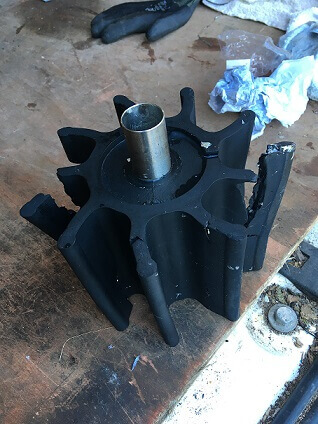
My approach to diagnosing any outboard problem is to start with the most common causes and simplest checks, then progress to more complex systems if needed.
How to Assess Cooling and Water Flow System
I've found that cooling issues often disguise themselves as fuel or ignition problems since overheating engines typically lose power rather than simply shutting down.
-
Check the Tell-Tale Stream: When I test any outboard, I always observe the tell-tale water output at various RPMs. On a Yamaha 9.9 I serviced last fall, the tell-tale showed a strong stream at idle but weakened significantly at higher RPMs—a clear indication that the cooling system couldn't keep up with increased demands. Don't be fooled by a good stream at idle; test it at various throttle positions.
-
Inspect the Water Pump Impeller: During a routine service on my own Yamaha 9.9 in 2019, I found an impeller that looked decent—all vanes intact with minimal cracking. However, when I flexed the vanes with my fingers, they barely moved, having lost their elasticity. This stiff impeller couldn't form the tight seal needed against the housing at high RPMs, resulting in decreased water flow precisely when more cooling was required. When ordering replacements, the Yamaha Water Pump Impeller Kit offers convenient options.
-
Flush the Cooling Passages: After purchasing a used saltwater Yamaha 9.9 in 2015, I performed what I call a "descaling flush." I mixed a solution of white vinegar and water, ran it through the engine's cooling system using earmuffs, then followed with a clean freshwater flush. The amount of scale and debris that came out was shocking—and the engine's high-speed performance improved dramatically afterward.
How to Inspect and Clean the Carburetor
In my experience, carburetors are responsible for about 80% of idle problems on Yamaha 9.9 outboards.
-
Initial Inspection: Before removing anything, I always perform a quick visual check. On a client's Yamaha 9.9 last year, I noticed the throttle linkage was slightly bent, preventing the carburetor from fully closing to idle position. This simple observation saved hours of unnecessary carburetor work.
-
Carburetor Removal: When removing a carburetor from a Yamaha 9.9, I've learned to take photos from multiple angles before disconnecting anything. On one service job, I didn't document the precise routing of a small vacuum hose, which led to hours of frustration during reassembly. Now I create a detailed photographic record showing exactly how everything connects.
-
Visual Inspection: During a rebuild of a 2007 Yamaha 9.9 carburetor, I found the float bowl gasket had hardened and deformed, allowing air to leak into the system and creating a lean condition at idle. The gasket still sealed well enough for high-RPM operation, but failed to maintain the precise air-fuel ratio needed for smooth idling.
-
Disassembly and Cleaning: The level of detail here makes or breaks the repair:
When cleaning a severely gummed-up carburetor from a Yamaha 9.9 that had sat with ethanol fuel for two years, I discovered that spray cleaners alone weren't enough. The idle jet was so plugged that no amount of soaking or spraying would clear it. I carefully used a single strand from a brass wire brush to gently ream the passage, being extraordinarily careful not to enlarge the jet. After that, compressed air finally blew through cleanly, and the engine ran perfectly afterward.
I've also found that many do-it-yourselfers miss cleaning the emulsion tubes—small components with tiny holes that mix air and fuel. On one repair, I discovered these holes were completely blocked while the jets themselves were relatively clean. The engine would run at full throttle but stumbled at idle until these passages were properly cleared.
-
Reassembly and Testing: When rebuilding a Yamaha 9.9 carburetor in 2020, I discovered the importance of proper float height adjustment. The manual specified 0.63 inches, but careful measurement showed my float was sitting at 0.55 inches. This small discrepancy caused a rich condition at idle that disappeared at higher RPMs when increased fuel flow became necessary anyway. Precise adjustment resolved the issue completely.
Confirming Fuel-to-Air Ratio Problems
Getting the fuel-air mixture right has proven crucial in my outboard work:
Running Only with Choke On: Last season, I diagnosed a Yamaha 9.9 that would only run with partial choke engaged. After ruling out carburetor blockages, I discovered a significant air leak at the intake manifold gasket. The leak allowed excess air into the system at idle speeds, creating such a lean condition that the choke was necessary to compensate. At higher RPMs, the increased fuel flow overcame this issue.
Idle Screw Adjustment: On my personal Yamaha 9.9, I've found that seasonal changes actually require slight adjustments to the idle mixture. In colder weather, I typically need to richen the mixture slightly (about 1/4 turn counterclockwise on the mixture screw) to maintain smooth idling. This subtle adjustment makes a significant difference in real-world operation.
Repair and Maintenance Tips for Yamaha 9.9 Outboards
After diagnosing countless outboard problems, I've developed specific repair approaches that consistently deliver results.
Ultrasonic Carburetor Cleaning Explained
In 2018, I invested in an ultrasonic cleaner after struggling with a particularly stubborn Yamaha 9.9 carburetor that wouldn't idle properly despite multiple manual cleaning attempts.
The ultrasonic cleaning revealed its value immediately. After a 30-minute session in the ultrasonic tank using a quality carburetor cleaning solution, tiny particles of debris emerged from passages I had already "cleaned" manually. The difference was immediately apparent when I reinstalled the carburetor—the engine idled perfectly without adjustment.
The science behind ultrasonic cleaning is fascinating. The high-frequency sound waves (typically 35-45 kHz) create microscopic bubbles in the cleaning solution. When these bubbles collapse, they produce tiny, powerful shock waves that dislodge contaminants from even the most inaccessible areas of the carburetor.
For one restoration project involving a 1998 Yamaha 9.9 that had sat unused for five years, ultrasonic cleaning was the only method that successfully removed the hardened varnish from the idle circuit. No amount of manual cleaning with picks, wires, or spray could accomplish what 45 minutes in an ultrasonic cleaner did.
When to Replace Parts and Seek Professional Help
Through years of troubleshooting, I've developed some clear guidelines on when to replace rather than repair:
Worn Carburetor Components: In 2019, I attempted to rebuild a heavily corroded carburetor from a saltwater-used Yamaha 9.9. After spending hours cleaning and replacing gaskets, the engine still ran poorly. When I finally replaced the entire carburetor assembly with a new unit, the difference was dramatic. Sometimes, the cumulative wear on multiple components makes replacement more cost-effective than rebuilding.
I've found that critical wear items like the float needle and seat deserve special attention. On a 2004 Yamaha 9.9 I serviced, these components showed minimal visible wear, but under magnification, I could see the needle's tip had a slight flat spot that prevented proper sealing at idle. No amount of cleaning would fix this—only replacement solved the problem. For genuine parts, see our Yamaha Carburetor collection.
Cooling System Issues: After replacing three water pump impellers on my guide boat's Yamaha 9.9 in a single season, I discovered the wear plate inside the pump housing had significant grooves. The impellers were being damaged by this rough surface, explaining their short lifespan. In this case, replacing the entire pump housing assembly was necessary for a lasting fix.
During a significant overheating issue on a client's 2011 Yamaha 9.9, I found the thermostat was sticking intermittently. While cleaning might have temporarily fixed it, the corrosion on the thermostat spring suggested future problems were likely. Replacement was the only reliable solution.
Fuel System Beyond the Carburetor: When diagnosing a Yamaha 9.9 with persistent stalling issues in 2017, I traced the problem to a deteriorating fuel line that was invisibly leaking air into the system. It looked fine externally, but under pressure testing, tiny bubbles revealed the problem. This type of issue requires complete replacement of the affected components.
Engine Mechanical Issues: Last year, I helped diagnose a Yamaha 9.9 with good compression readings but persistent rough running. After exhausting fuel system possibilities, a cylinder leak-down test revealed leaking exhaust valves. This was beyond my comfort zone for repair, so I recommended professional service. The mechanic discovered valve seat recession that required specialized equipment to repair properly.
Community and Expert Support Resources
The collective wisdom of the boating community has saved me countless hours of trial and error over the years.
When troubleshooting a peculiar idle issue on my Yamaha 9.9 in 2016, I posted detailed symptoms on The Hull Truth forum. Within hours, a retired marine mechanic suggested checking the accelerator pump diaphragm—a component I hadn't considered. His advice proved spot-on, saving me days of frustration.
I've found specific YouTube channels particularly helpful for visual guidance. Dangar Marine offers excellent technical explanations of outboard systems, while MarineEngine.com's channel frequently features Yamaha-specific troubleshooting. Seeing the actual process of disassembly and inspection has improved my own diagnostic skills immensely.
For those uncomfortable with DIY repairs, finding the right marine mechanic is crucial. When my electrical system knowledge reached its limits during a complicated Yamaha 9.9 no-start condition, I relied on a local Yamaha-certified technician. His factory training and diagnostic equipment identified a failing CDI unit that I wouldn't have found through conventional testing.
Frequently Asked Questions About Yamaha 9.9 Outboard Issues 
After years of answering questions from fellow boaters, these are the most common concerns I hear:
Why does my Yamaha 9.9 stall at idle and low throttle?
In my experience with dozens of these engines, a clogged idle circuit in the carburetor is the culprit 80% of the time. Last spring, I cleaned a carburetor that looked pristine externally but had a nearly invisible particle blocking the idle jet. The blockage was so small I needed magnification to see it, yet it completely prevented proper idle while allowing full-throttle operation. I've also found that deteriorated fuel lines that leak air or a worn float needle can create similar symptoms by disrupting the precise fuel-air ratio needed at idle.
How can I tell if my carburetor is clogged?
I diagnose this through a simple behavioral test: If the engine runs smoothly with partial choke engaged but dies when the choke is fully off, it's almost certainly a clogged idle circuit. On a 2008 Yamaha 9.9 I serviced, this exact symptom led me to find a carburetor that looked clean but had microscopic debris obstructing the idle jet. Another telltale sign I've observed is a significant delay between throttle application and RPM increase—this often indicates restricted fuel passages.
Is ultrasonic cleaning necessary for Yamaha carburetors?
While not strictly necessary, I've found ultrasonic cleaning to be dramatically more effective than manual methods. When restoring a severely neglected Yamaha 9.9 in 2019, I first spent three hours meticulously cleaning the carburetor by hand with brushes, wires, and spray. The engine ran better but still had issues. After just 40 minutes in an ultrasonic cleaner, the same carburetor produced perfect idle and throttle response. For engines with long-term fuel varnish or multiple unsuccessful manual cleaning attempts, I now always recommend ultrasonic cleaning.
What causes Yamaha 9.9 to fail at wide open throttle?
When diagnosing high-RPM failures on these engines, I immediately check the cooling system. On a client's boat last summer, the engine would run perfectly for about 10 minutes at high speed before losing power. Temperature testing revealed excessive heat in the powerhead. The water pump impeller looked good but had hardened with age, reducing its pumping efficiency under sustained load. After replacement, the problem disappeared completely. I've also traced WOT failures to fuel delivery problems—particularly failing fuel pumps that can't keep up with high-RPM demands and clogged fuel filters that might flow adequately at low RPM but restrict flow under heavy fuel demands.
Can I fix Yamaha outboard overheating myself?
Absolutely—I've done dozens of water pump replacements on Yamaha 9.9 engines with basic tools. The most challenging part is properly removing and reinstalling the lower unit, but with careful attention to proper bolt torquing (I use a calibrated inch-pound torque wrench), it's completely manageable for a mechanically inclined person. In 2018, I replaced the water pump impeller on my own Yamaha 9.9 in about two hours, including thoroughly cleaning all cooling passages. If you're comfortable working with basic tools and following detailed instructions, water pump maintenance is definitely within DIY territory.
Preventative Maintenance for Long-Term Reliability
Through years of maintaining my own fleet of outboards, I've developed a maintenance regimen that has dramatically reduced unexpected problems.
Annual Cooling System Maintenance
I never skip annual water pump service on my Yamaha 9.9s. In 2016, I thought I could extend an impeller's life "just one more season" and paid the price with an overheated powerhead during a critical fishing tournament. Now I replace the impeller preventatively every season if the engine sees regular use.
Beyond the impeller, I've found that flushing the cooling system with a descaling solution once annually prevents mineral buildup that can restrict water flow. After switching to this routine in 2017, I've never experienced another overheating issue with any of my Yamaha outboards.
Fuel System Care for Trouble-Free Operation
Ethanol fuel has created numerous challenges for outboard owners. I've adopted a strict fuel management protocol that has eliminated nearly all carburetor problems:
- I always use non-ethanol fuel when available
- I add a quality fuel stabilizer to every tank, regardless of planned storage time
- For storage longer than two weeks, I run the carburetor dry
- For seasonal storage, I follow a comprehensive winterization procedure
This approach has virtually eliminated the gummy deposits and corrosion that once plagued my earlier outboard ownership experiences.
Implementing These Solutions: A Real-World Example
Last year, my fishing partner's 2014 Yamaha 9.9 developed the classic symptoms—running fine at speed but stalling at idle. Following the diagnostic sequence outlined above, I discovered multiple issues:
- The carburetor's idle jet was partially blocked
- The fuel filter showed signs of contamination
- The water pump impeller, while functional, showed early signs of deterioration
Rather than addressing only the immediate problem (the clogged jet), we performed comprehensive service: ultrasonic carburetor cleaning, fuel filter replacement, water pump service, and a switch to non-ethanol fuel with stabilizer.
The results were dramatic—not only did the idle problems disappear, but the engine gained noticeable responsiveness throughout the RPM range and used less fuel overall. This experience reinforced my belief in addressing the complete fuel and cooling systems rather than chasing individual symptoms.
By understanding the common failure points of the Yamaha 9.9 and implementing preventative maintenance, you can enjoy exceptional reliability from these otherwise bulletproof little engines. The key is addressing issues systematically rather than symptomatically, and never taking shortcuts when it comes to proper service procedures.
For high-quality parts to support your repairs, always consider sourcing from JLM Marine's main website for genuine and OEM components.
I hope this comprehensive guide helps you get your Yamaha 9.9 running smoothly again. Feel free to share your own experiences or questions—the collective knowledge of the boating community continues to be one of our greatest resources.
Sources and Further Reading
- The Hull Truth Boating Forum - Extensive community knowledge base with thousands of real-world troubleshooting threads
- Dangar Marine YouTube Channel - Excellent technical explanations of outboard systems
- JLM Marine - Quality parts supplier for Yamaha outboards
- MarineEngine.com - Technical resource for diagrams and parts identification
Para propietarios de motores fueraborda Yamaha:
Para ayudarlo a mantener y reparar sus motores marinos, esperamos que los siguientes recursos puedan serle de utilidad:
-
Piezas para motores fueraborda Yamaha
- Bomba de agua Yamaha
- Impulsor de bomba de agua Yamaha
- Kit de impulsor de bomba de agua Yamaha
- Termostato Yamaha
- Carburador Yamaha
- Kit de reparación de carburador Yamaha
- Bomba de combustible Yamaha
- Filtro de combustible Yamaha
- Línea de combustible y conector de Yamaha
- Línea de combustible Yamaha
- Sello de aceite Yamaha
- Junta de Yamaha
- Interruptor de encendido Yamaha
- Kit de bomba de combustible Yamaha
Acerca de JLM Marine
Fundada en 2002, JLM Marine se ha consolidado como un fabricante dedicado de piezas marinas de alta calidad, con sede en China. Nuestro compromiso con la excelencia en la fabricación nos ha ganado la confianza de las principales marcas marinas a nivel mundial.
Como proveedor directo, evitamos intermediarios, lo que nos permite ofrecer precios competitivos sin comprometer la calidad. Este enfoque no solo promueve la rentabilidad, sino que también garantiza que nuestros clientes reciban el mejor valor directamente del proveedor.
Estamos entusiasmados de ampliar nuestro alcance a través de canales minoristas, llevando nuestra experiencia y compromiso con la calidad directamente a los propietarios de embarcaciones y entusiastas de todo el mundo.

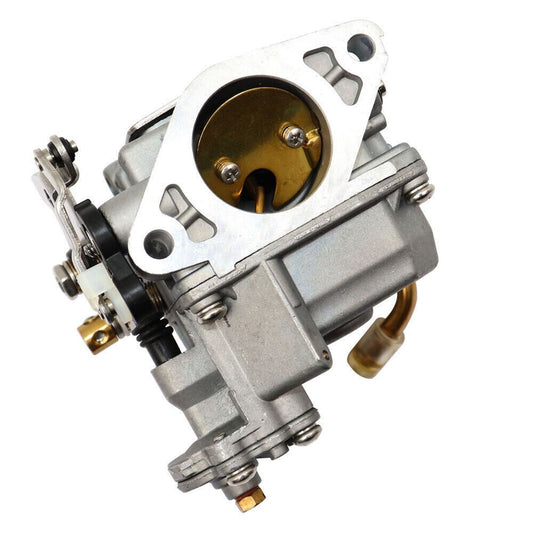
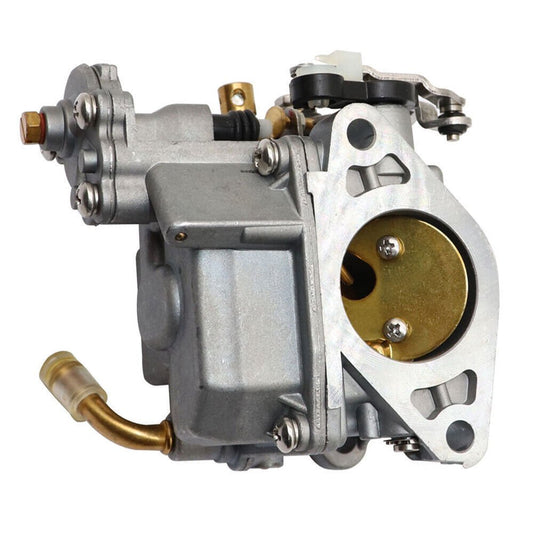
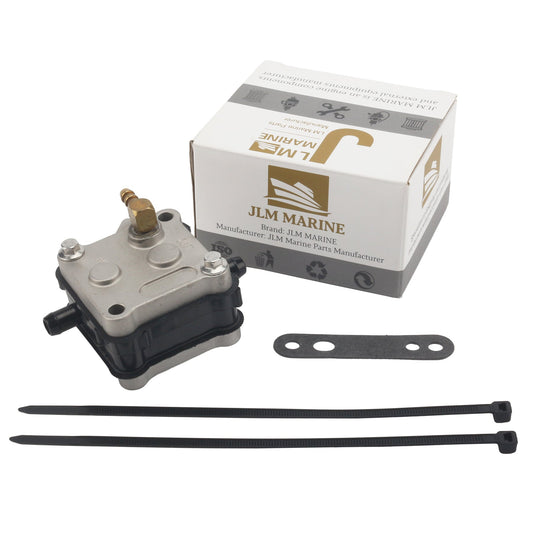
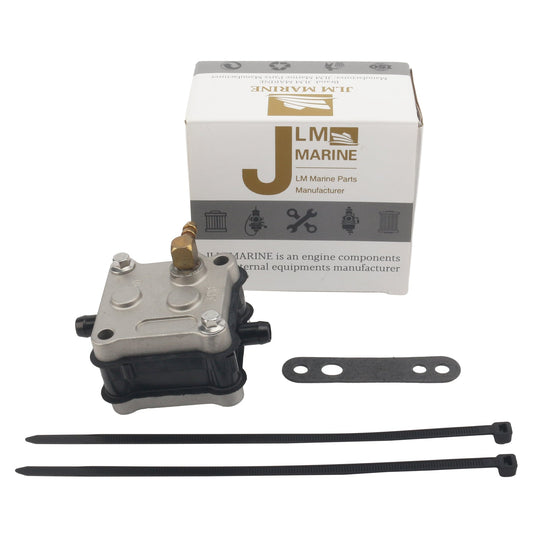
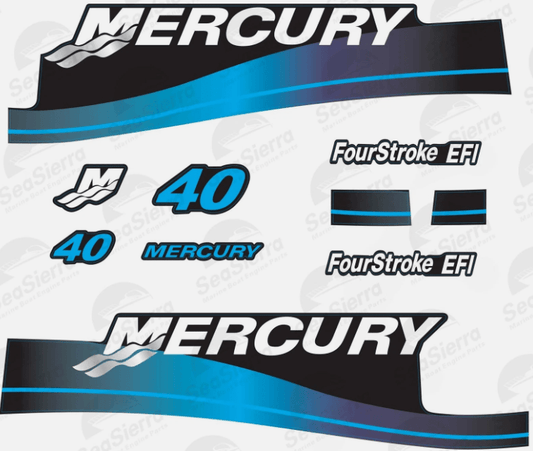
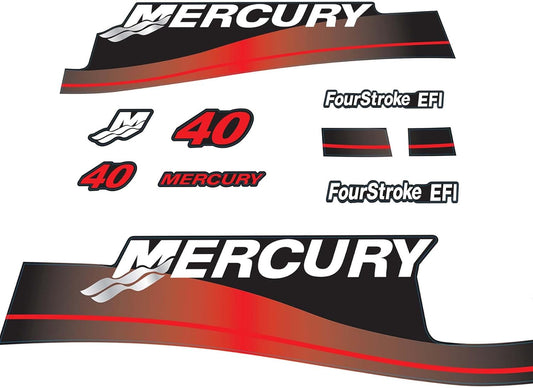
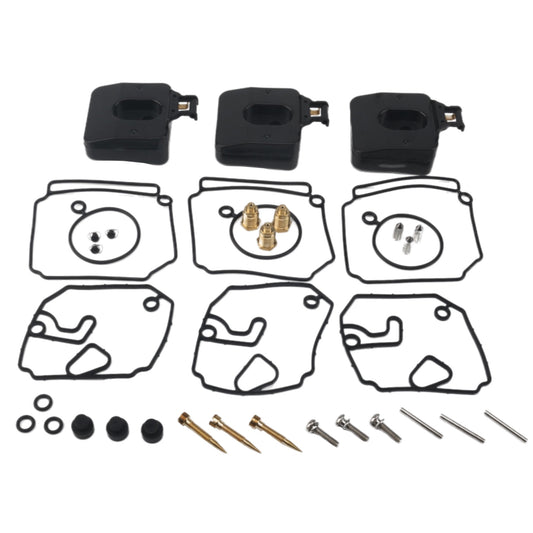

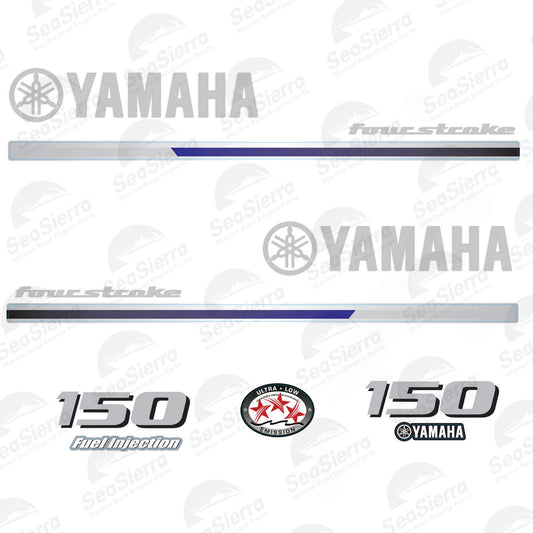
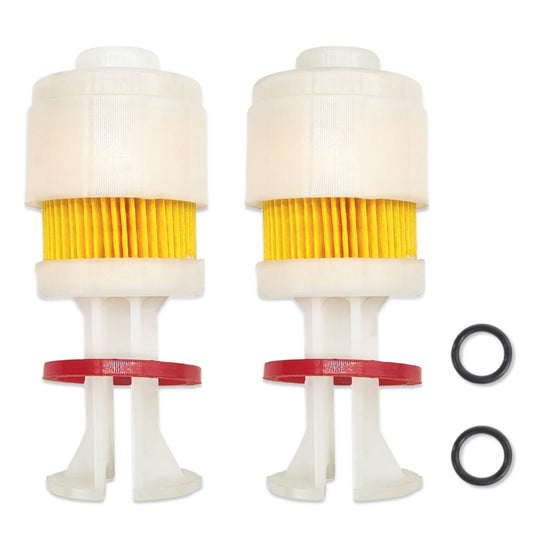



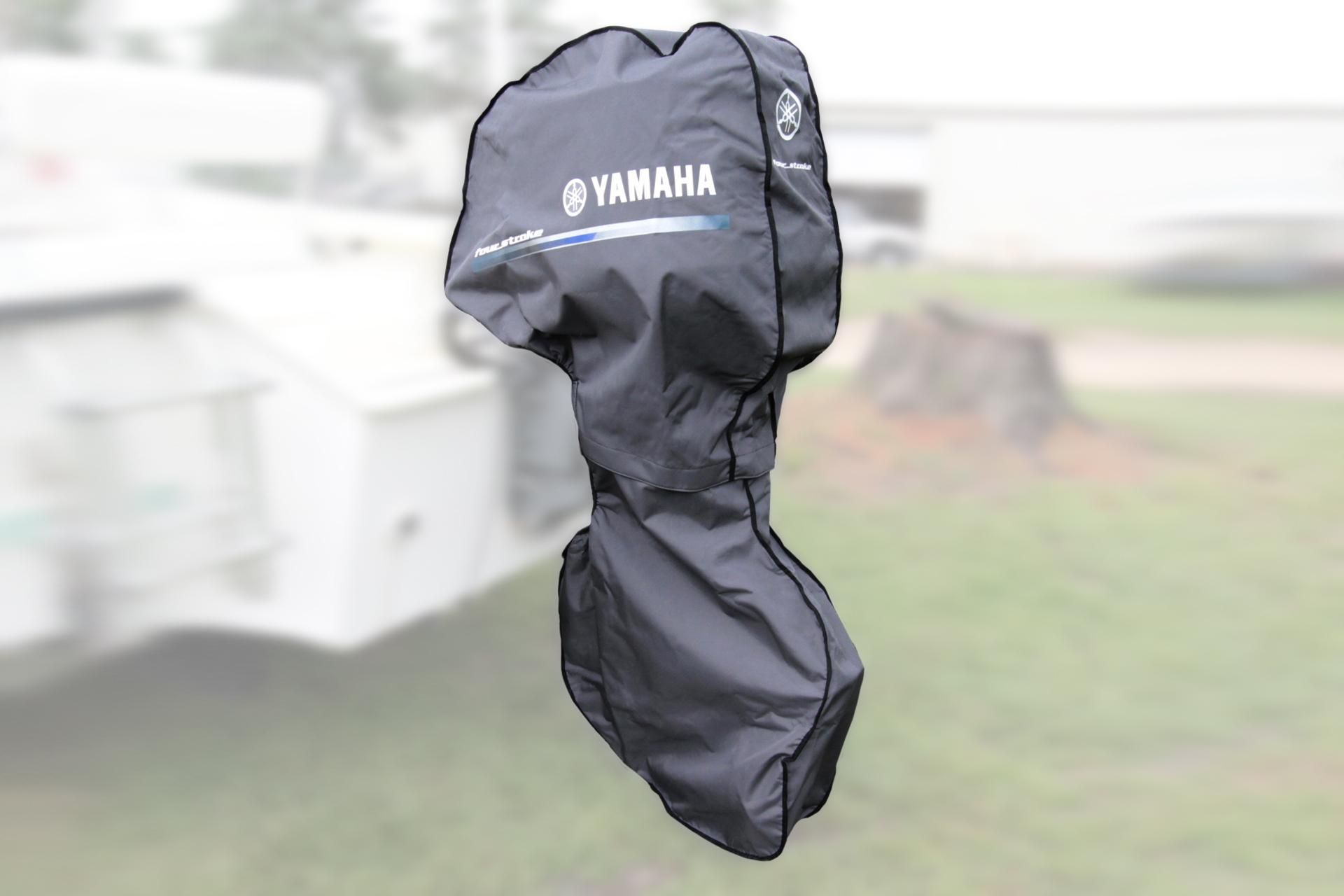
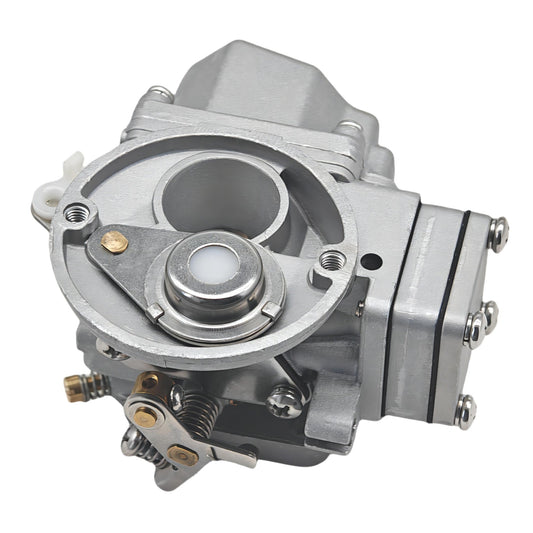
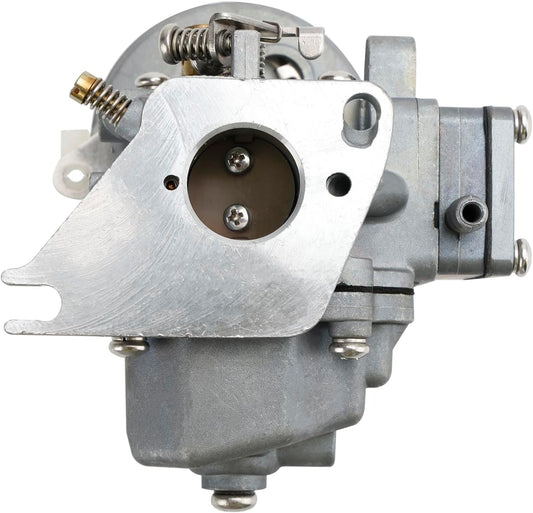
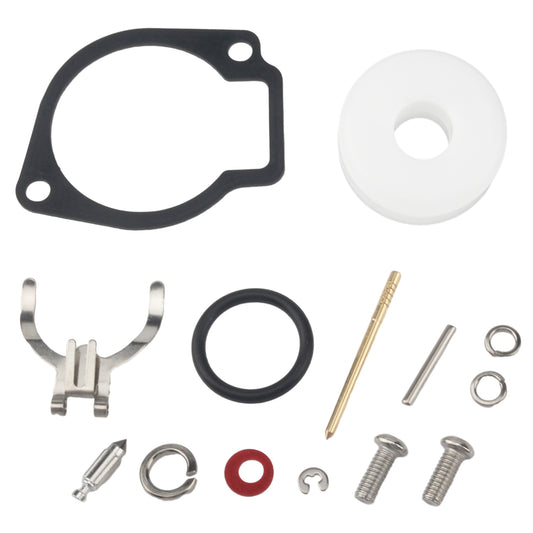
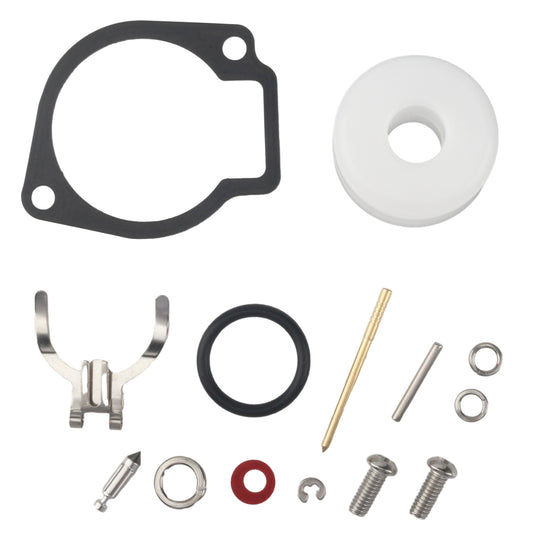

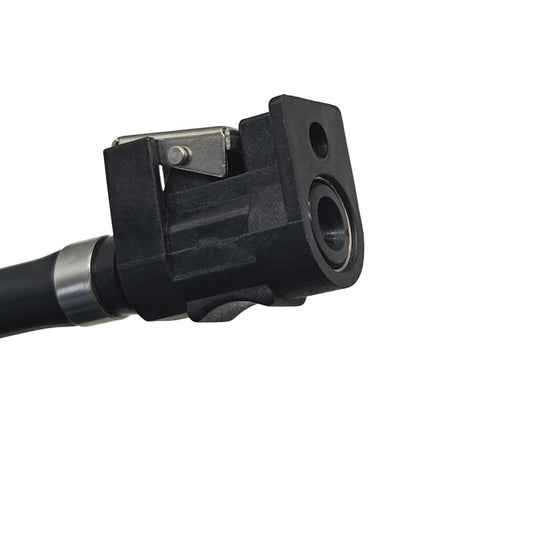
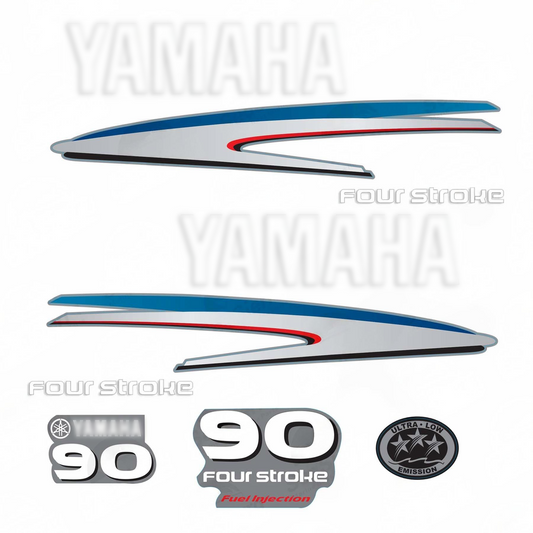
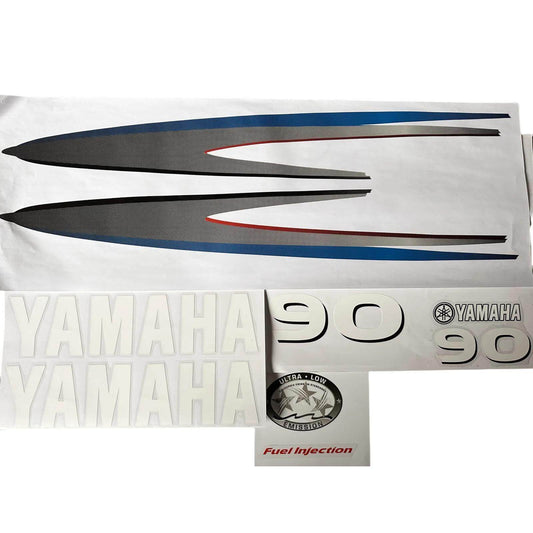
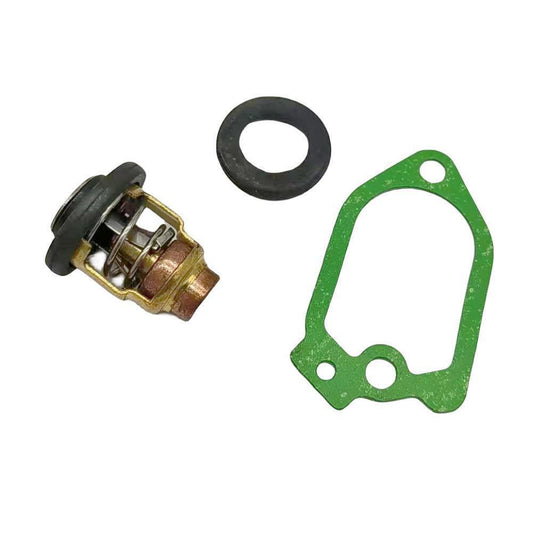
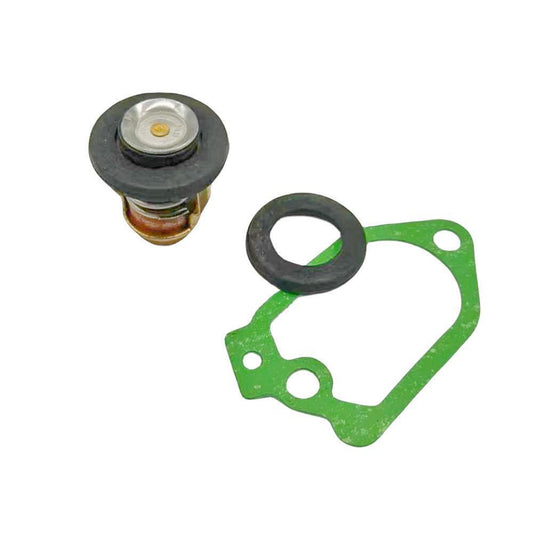
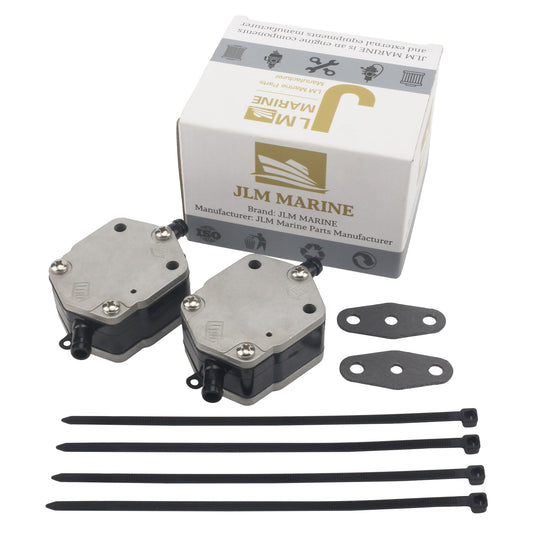
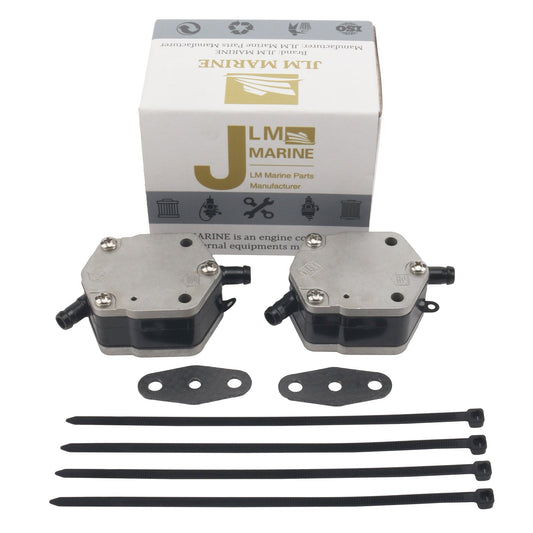
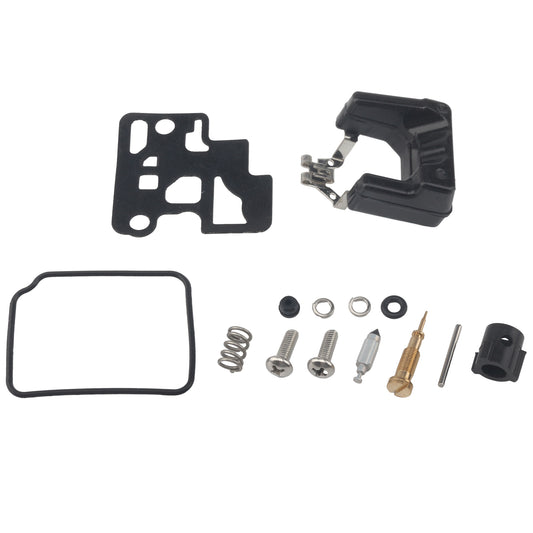
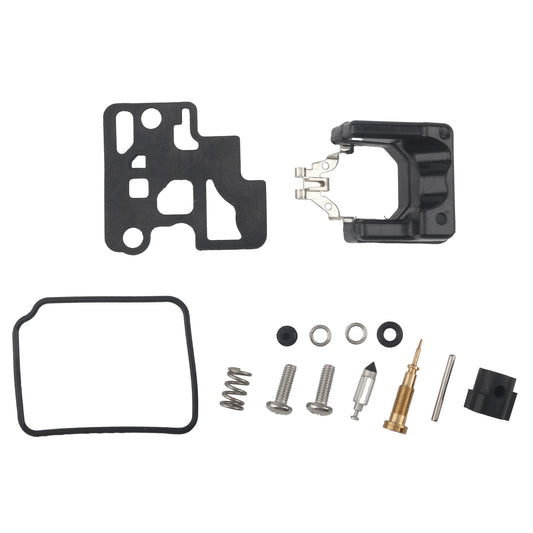
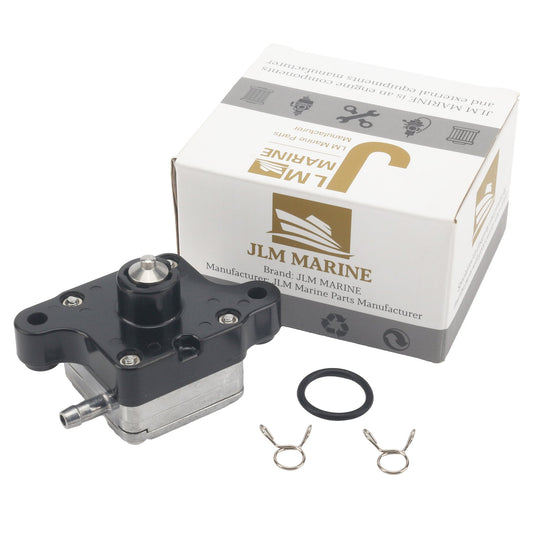
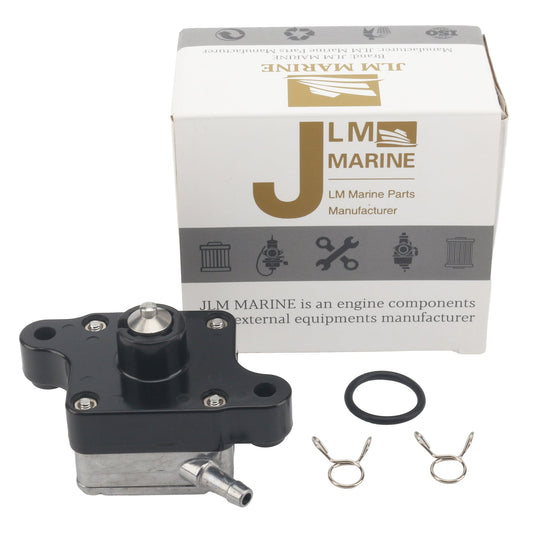
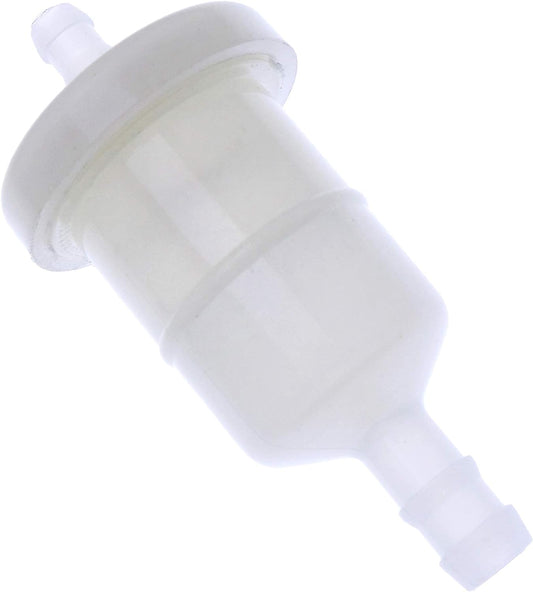
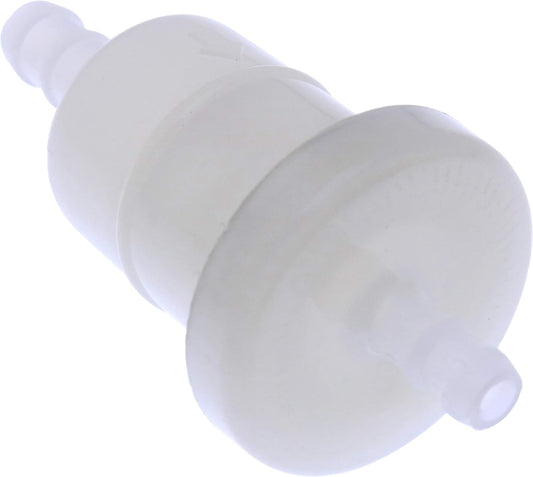
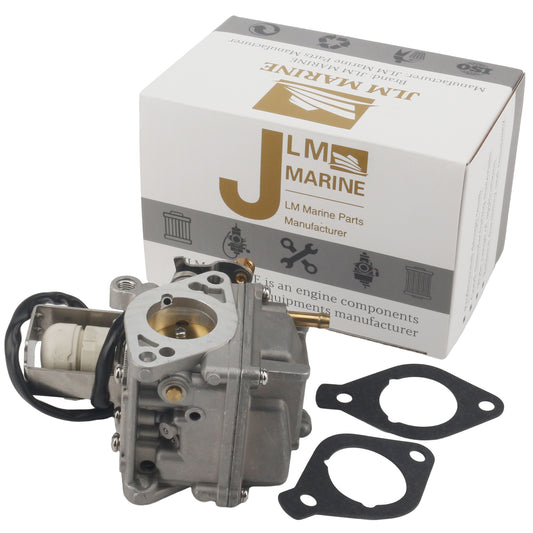

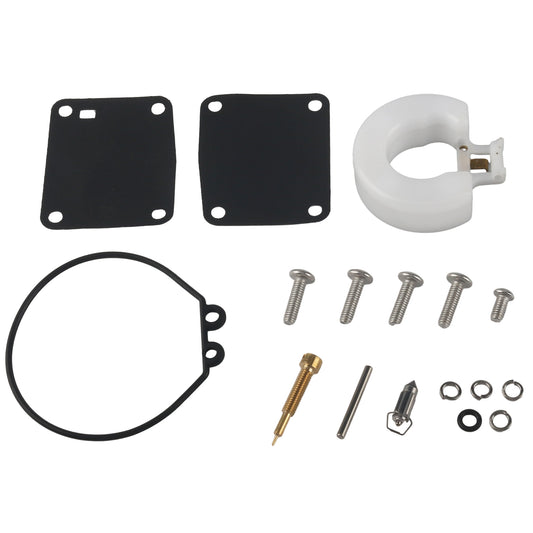
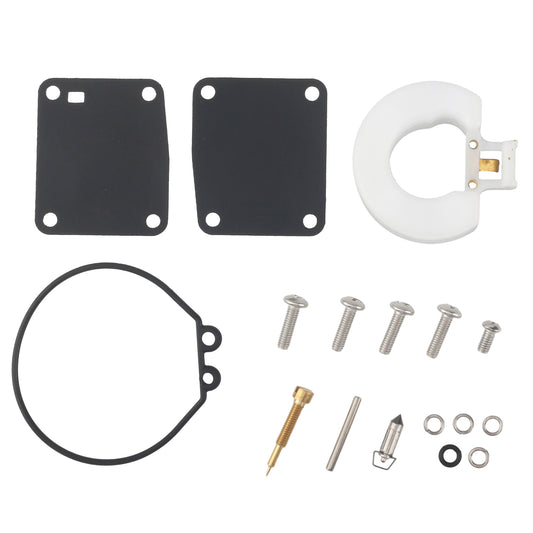
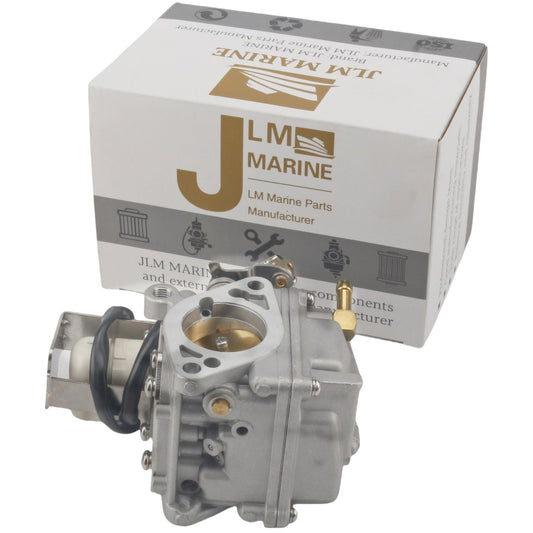
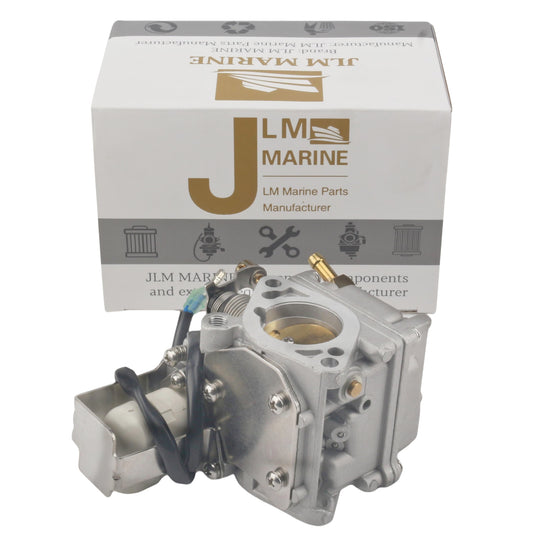
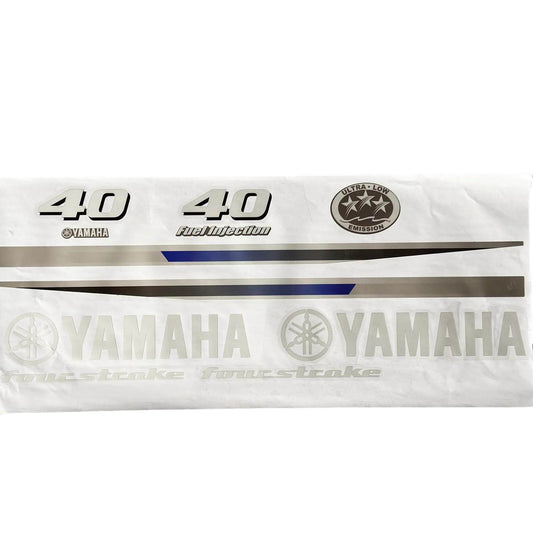
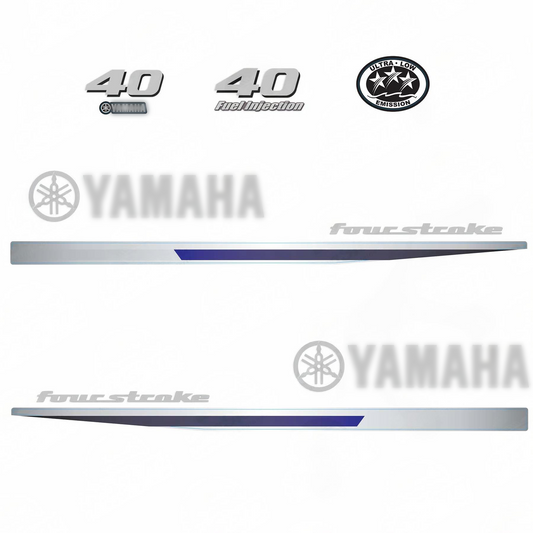
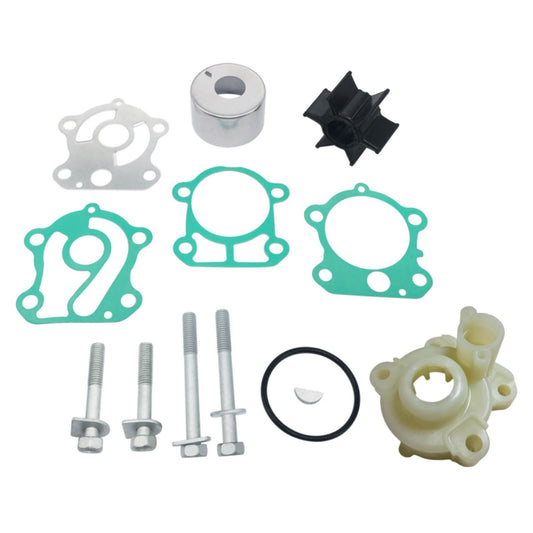
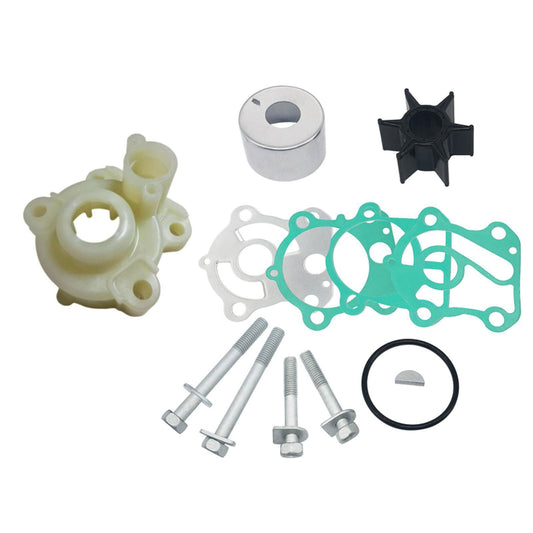
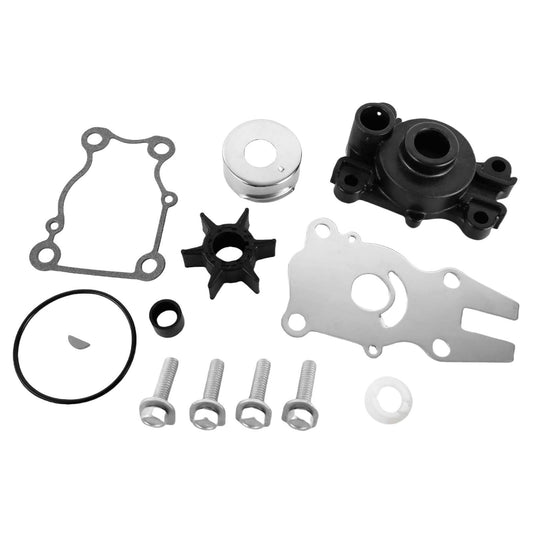
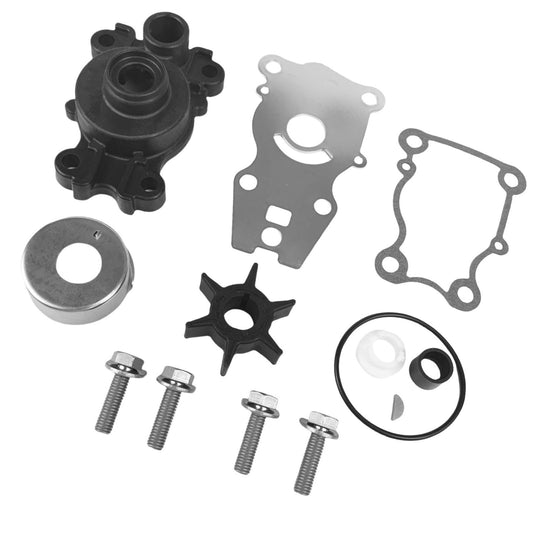
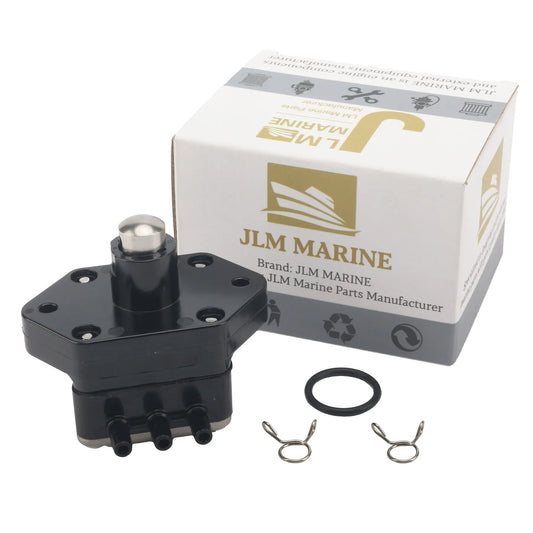


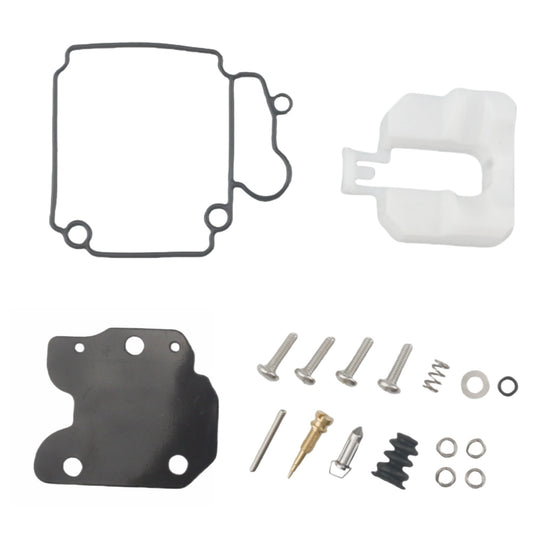
Leave a comment
Please note, comments need to be approved before they are published.